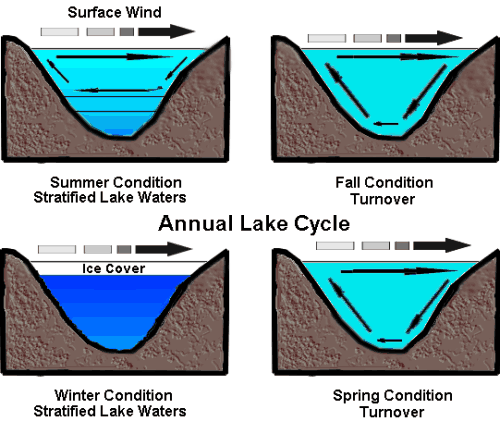
It was recently reported that the water in Big Glen appeared more “cloudy and foamy.” The question is why does the Big Glen look less desirable in the fall than in the summer when the water is more clear?
The answer is the lake has “flipped.” During the summer, Big Glen thermally stratifies creating a layered cake like arrangement with warm water at the surface sealing off the cooler bottom water (hypolimnion). Much of the phosphorous present in the lake is sequestered at the bottom of Big Glen and is separated from the upper sunlit and warmer water at the top. As air temperatures drop in the fall and the upper water cools,the now cooler and therefore more dense/heavier water sinks,forcing phosphoru
This “flipping” or “turning over” of the water column allows phosphorous to become available to plants such as algae. This boost of available nutrients is the driving force for algal blooms that makes the water more cloudy. Once the algae are done “blooming” the algal cells die and the wind channels the decomposing algae into foamy water that washes up on shore in the fall. Guess what comes next? Winter.
For more information on this natural phenomenon click here.
Recent Comments